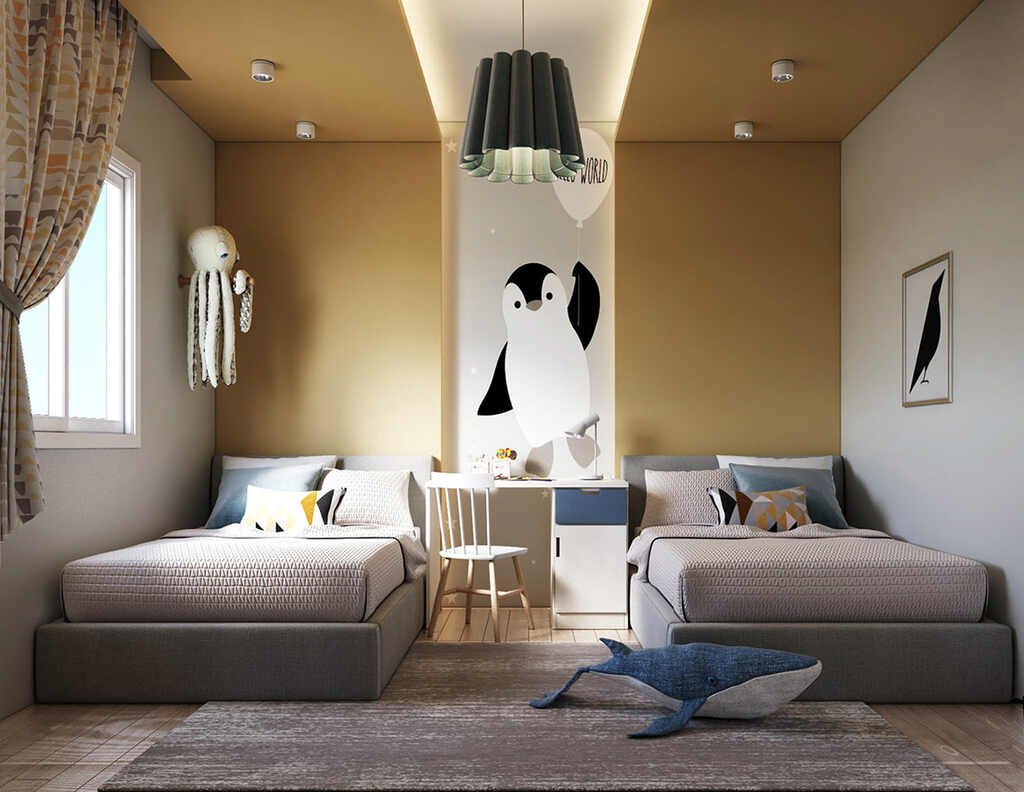Shared bedrooms hold a unique charm, offering the opportunity to build strong bonds and create cherished memories with roommates, whether they are family, college buddies, or close friends. Creating a harmonious living environment ensures everyone’s comfort and happiness.
The Essence of Harmonious Living in Shared Bedrooms
Living in harmony with roommates elevates life’s overall quality, fostering open communication, mutual respect, and consideration for each other’s preferences and needs. A thoughtfully designed shared bedroom promotes better sleep and provides a welcoming space for relaxation, study, and personal time.
Navigating the Maze of Mattress Choices
Embarking on the journey of harmonious living starts with a good night’s sleep, and the right mattress plays a pivotal role in attaining this aspiration (myessentia.ca/collections/memory-foam-mattresses).
Understanding individual preferences
Sharing a bedroom means recognizing diverse mattress preferences regarding firmness and materials. Customizable mattresses that cater to different comfort levels prove to be worthy investments.
Optimal size and firmness
Finding the perfect mattress size and firmness ensures sufficient space for all occupants while preserving personal boundaries.
Mastering Furniture Placement and Space Efficiency
Unlocking the full potential of available space proves vital in shared bedrooms. Artful furniture placement and space optimization can improve the room’s functionality and visual appeal.
Bunk beds and loft beds
Embracing the ingenuity of bunk beds or loft beds maximizes floor space, providing individual sleeping areas while effectively using vertical space.
Storage solutions
Elevating storage solutions to the walls opens up precious floor space. Shelves, wall-mounted organizers, and hanging storage streamline personal belongings. Multi-functional furniture and under-bed storage solutions offer efficient ways to manage belongings, minimize clutter, and maintain orderliness.
Crafting Personal Spaces Within Shared Bedrooms
In a shared bedroom, nurturing individuality becomes imperative, ensuring each occupant’s personality and interests shine through.
Divide and define areas
Granting roommates their nooks within the shared room cultivates a sense of ownership and privacy, accomplished through curtains, room dividers, or bookshelves. Infusing personal items, cherished photos, and meaningful decorations into each occupant’s space fosters a homely ambiance.
Illuminating With Care
Appropriate lighting is significant in shared bedrooms, setting the ambiance and influencing individual sleep patterns.
Balance natural and artificial lighting
Emphasizing access to natural light during the day and incorporating dimmable lighting fixtures offer the flexibility to adjust brightness according to varied needs.
Individual bedside lighting
Enabling individual control over bedside lamps or wall sconces caters to personal lighting preferences, respecting each roommate’s sleep routines.
Noise Reduction and Privacy
Shared bedrooms can sometimes be accompanied by shared noise and disturbances. Implementing noise reduction and privacy measures enhances the living experience.
Soundproofing strategies
Softening the ambiance with rugs, curtains, and acoustic panels curtails noise transfer between sleeping areas, ensuring restful nights.
Privacy screens and curtains
Introducing privacy screens or curtains around individual beds grants moments of solitude and privacy whenever desired.
Order and Tidiness for a Positive Living Environment
A clean and organized shared bedroom nourishes a positive and comfortable living environment.
Implementing a cleaning schedule
Establishing a joint cleaning routine cultivates a sense of responsibility and keeps the shared space orderly.
Encouraging responsibility
Encouraging each roommate to take ownership of their belongings promotes tidiness and harmony.
Nurturing Communication and Resolving Conflicts
In any shared space, occasional conflicts may arise. Addressing issues promptly and fostering open communication among roommates fosters a cohesive living experience.
Setting ground rules
Establishing clear and equitable ground rules regarding noise levels, visitors, and shared responsibilities lays the foundation for respectful cohabitation.
Encouraging open dialogue
Nurturing a climate of trust and openness enables roommates to express concerns and constructively resolve conflicts.
Adapting to Individual Sleep Schedules
Respecting diverse sleep schedules is crucial for maintaining harmony in shared bedrooms.
Noise control during sleep hours
Being considerate of noise levels during others’ sleep hours supports uninterrupted and restful sleep for all.
Night owls and early birds
Offering alternative spaces for night owls or early birds to read or work outside the bedroom accommodates varied sleep routines.
Creating Spaces for Relaxation and Serenity
Incorporating designated relaxation areas enriches the shared bedroom experience, promoting tranquility and downtime.
Reading nooks and chill corners
Cozy reading nooks or relaxation corners provide sanctuaries for roommates to unwind and enjoy personal time.
Mindfulness and meditation spaces
Delving into mindfulness or meditation areas encourages relaxation and stress relief for enhanced well-being.
Harnessing the Power of Greenery
Indoor plants infuse shared bedrooms with a touch of nature, fostering serenity and well-being.
Indoor plants for serenity
Selecting low-maintenance indoor plants that thrive in bedroom conditions brings a touch of greenery and life to the shared space.
Caring for plants together
Embracing collective care for indoor plants nurtures a sense of shared responsibility and nurturing among roommates.
Final Thoughts
A friendly roommate arrangement can bloom into a haven of warmth and friendship. Roommates can foster a peaceful home and strengthen their bond through deliberate mattress selection, efficient use of space, the addition of meaningful personal touches, and frequent and open communication.
Recommended Posts:









